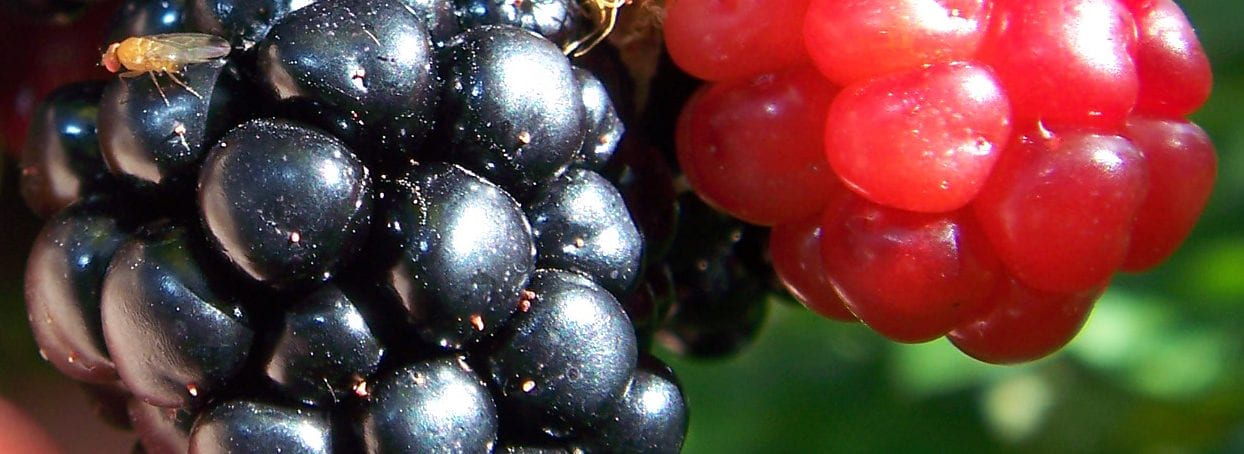One male was captured in a drowning jar trap in Rensselaer County on Sunday 6/19 in an Amelanchier (serviceberry) hedgerow. Thanks to Dale-Ila Riggs at the Berry Patch for monitoring at her farm and providing this information.
We expect SWD to be prevalent throughout most of the Capital Region soon, particularly after the ample rainfall we received last week. We will continue to provide updates as it is identified in other locations.
One of the management tactics Dale-Ila is deploying includes exclusion netting. She has been using netting and collaborating with CCE research on this practice for a number of years, with outstanding results. This type of management can provide 100% control if properly executed. Dale-Ila is currently in the process of putting up nets and hopes to have them in place by the end of the week.
Insect exclusion netting can be installed prior to the arrival of SWD to create a physical barrier between the insects and the fruit. Netting is woven polyethylene yarn, available in different gauges (i.e. hole size). Field trials have demonstrated that 80 gram netting (1.0 x 0.6 mm) is effective for exclusion, but 60 gram netting is not. Netting is 100% effective if effectively managed, meaning netting is installed before SWD arrives, no holes are present, and nets are routinely inspected and maintained throughout the season. Netting also provides protection from other damage, such as birds, high wind, and hail. For more detailed information, see Thinking exclusion? on the NYSIPM Spotted Wind Drosophila blog.

